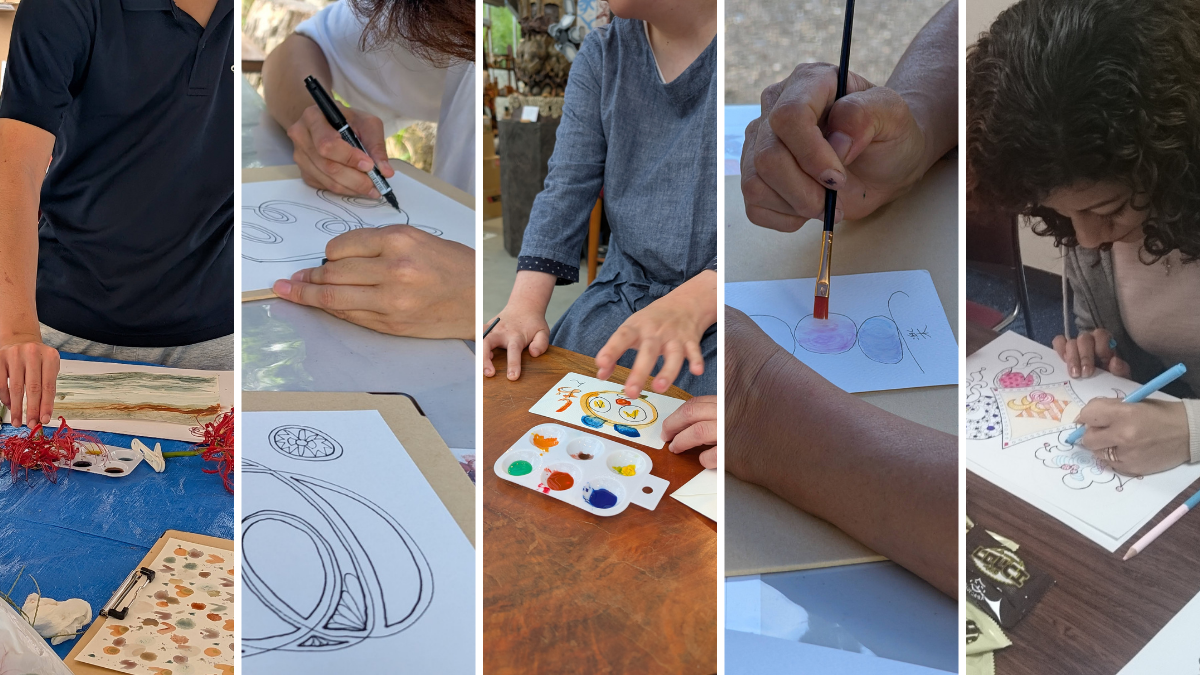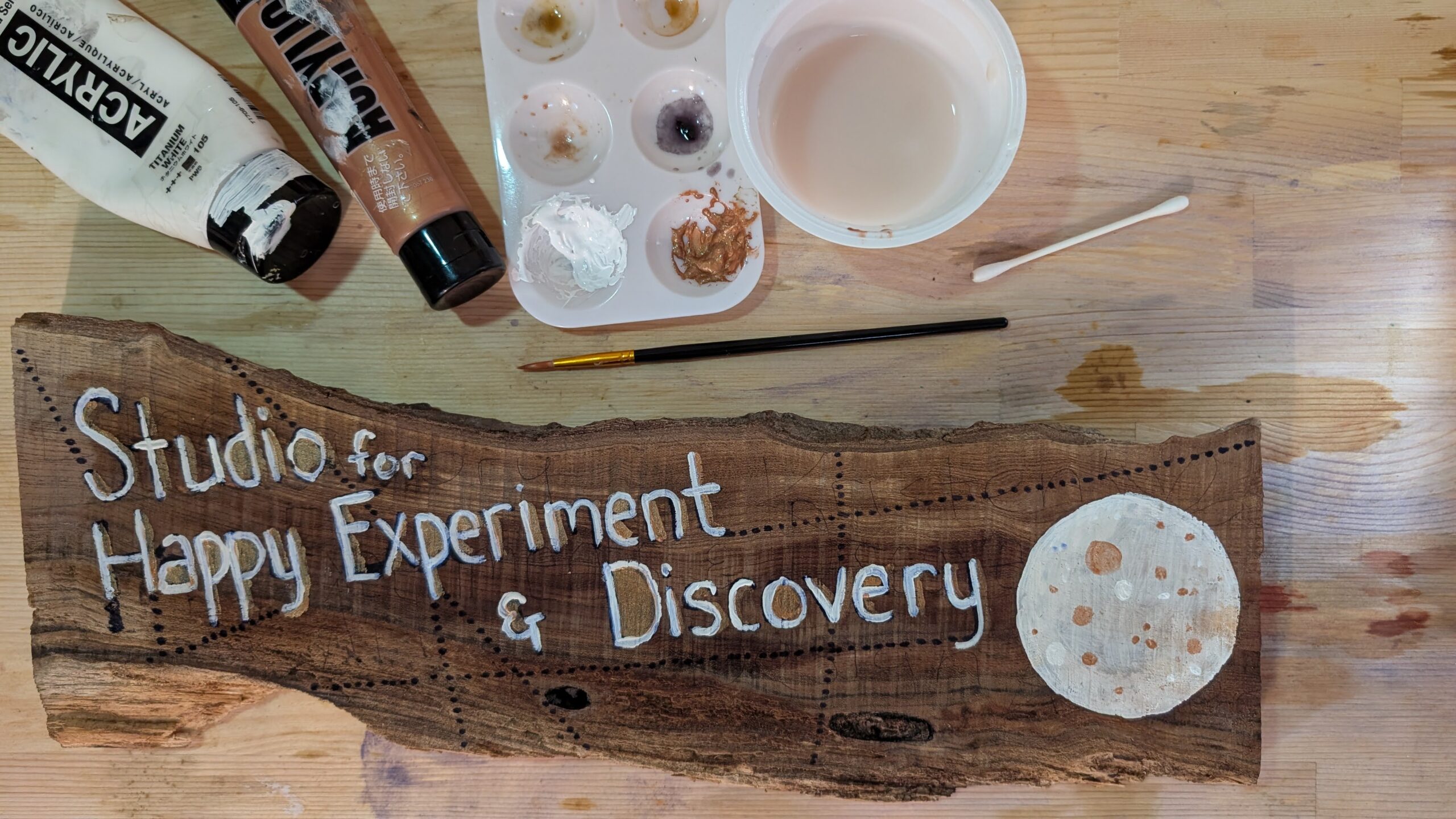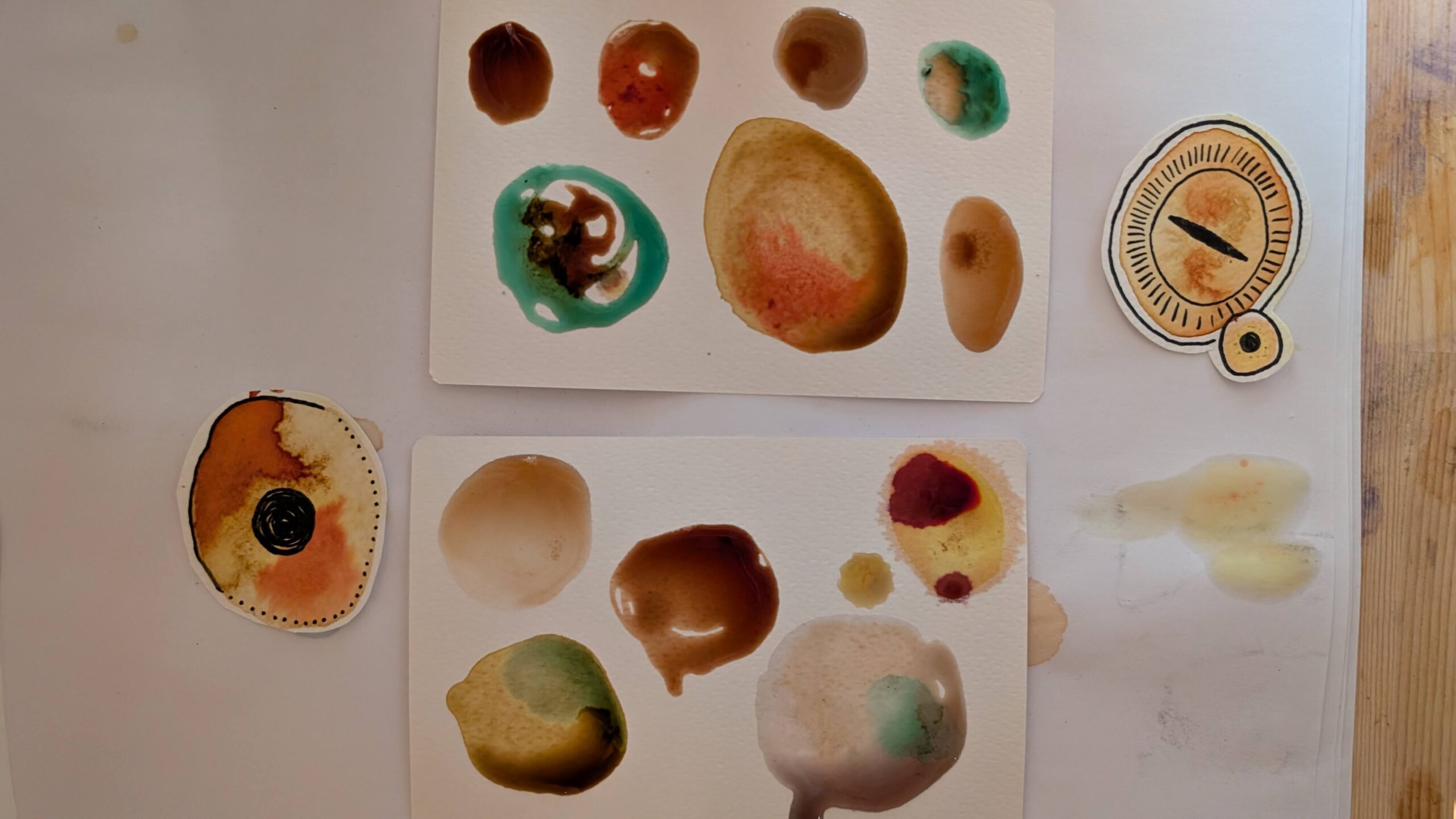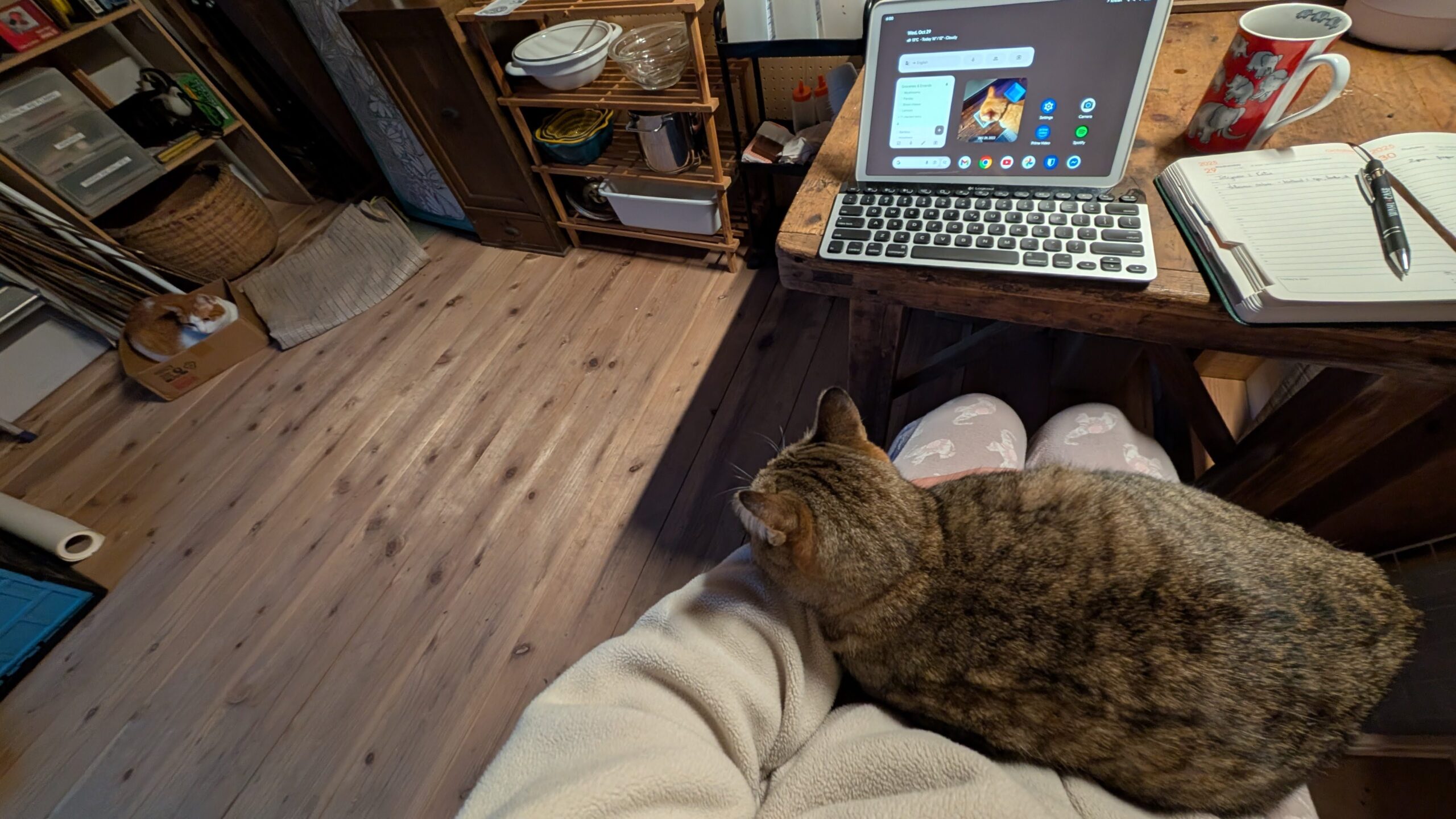Here’s a question I frequently ask myself: when teaching a creative topic, is it best to have students copy your work and use your ideas, or is it better to let them roam free in their own style?
I’ve done both and I don’t have a definitive answer. It depends on the students, mood of the class, and my goal as an instructor: am I teaching technique or inner awareness?
Meditation over product
In my Drawing Meditation classes, the point is relaxing and finding insight. The art itself is merely the vehicle for the journey within.
However, with insufficient guidance, students can feel insecure or uncertain and that definitely isn’t a good starting point for inner work. So I give a little instruction, a demonstration, and some examples of the kind of art we’re going to do. And then I let everyone interpret.
So it really shouldn’t matter whether students copy me or do their own thing.
But things go off the rails
As a teacher, it is definitely harder to allow students to freely do what they want. Because sometimes that’s not what the underlying intention or class plan says. I have seen that many times.
In a recent session, one student decided to add color to the pen and ink relaxation exercise we did as a warmup and suddenly everyone at the table was praising her idea and trying it themselves.
It looked beautiful, but it cut into the 90 minutes I had blocked out for the second concept in class – letting go of expectations. I’d intended for there to be a portion of the session for sharing insights, but that didn’t happen.
Joke’s on me there, isn’t it?! I had to let go of my expectations in real time.
Students who go off the rails onto their own trails are often the ones who are avoiding a harder task of looking inward. I decided on the second exercise because I knew that particular person would benefit from letting go of control in her artwork. As it turned out she took control of the classroom and got everyone to follow along with her.
Doing my own thing
I feel her, though. I am a difficult student myself.
As a participant in intuitive art classes, I dislike being told too strongly what to do. I am not comfortable copying other people’s style. I learn best through experiment so trying to imitate the teacher isn’t true to myself. Of course, that makes the teacher’s job a lot harder when I hold up something in my own style and they try to interpret it according to their methods.
I know my experimental nature isn’t usual – most students like to try something new by copying what they see. I have proven this to myself by experimenting in workshops with kids.

Finding balance
In paper making classes at Oyama Senmaida, I encourage the kids to arrange their flowers and leaves into their paper using their own personal style. Excepting a few creative minds, they rarely explore beyond a reflection of whatever I do in my demonstration.
If my demo paper has letters formed with grass or a heart made from a red leaf, then many people copy it. But if I randomly place some leaves on the page or keep my design minimal, I notice there is more individual play on their pages because I haven’t given them a strong idea to latch onto.
I’ve toyed with making a set of samples in different styles to show at the beginning of paper making class for inspiration. But I haven’t done it because my colleagues mock me for being over-prepared. They are not wrong.
I like to offer students a variety of instructional tools: finished examples, how-to demonstrations, written directions, visual presentations, hands-on assistance, working in groups. I am a maximalist when it comes to teaching materials.
Where to draw the line
Ultimately, how loose or detailed to instruct depends on what outcome you want your students to have.
- Correct Product: use detailed instruction, either in lockstep with the instructor or followed by checking and correcting through the process. There is a specific outcome expected; everyone is making the exact same thing with minimal variation. I work hard as a teacher to balance moving forward with helping students as there will be people waiting while others struggle to stay in step with the rest of the class.
- Exploring Process: show examples and a how-to demonstration, followed by enthusiastic praise and minimal corrections. The expected outcome is less consistent with more room for personal interpretation. The process can be written down for students who need reinforcement. Definitely the most fun for me as a teacher because students bring unexpected ideas to the class. It can be a bit chaotic.
- Relaxation/Inner Work: examples and demonstration followed by offering a meditation prompt or goal, then separating the students physically. As a teacher, I let myself participate in the art-making in order to restrain myself from interrupting the quiet. At the same time, I try to keep an eye on each student as intuitive art can be quite emotional and sometimes needs a little compassionate intervention.
It never hurts to be prepared. I’m going to make those sample cards.






